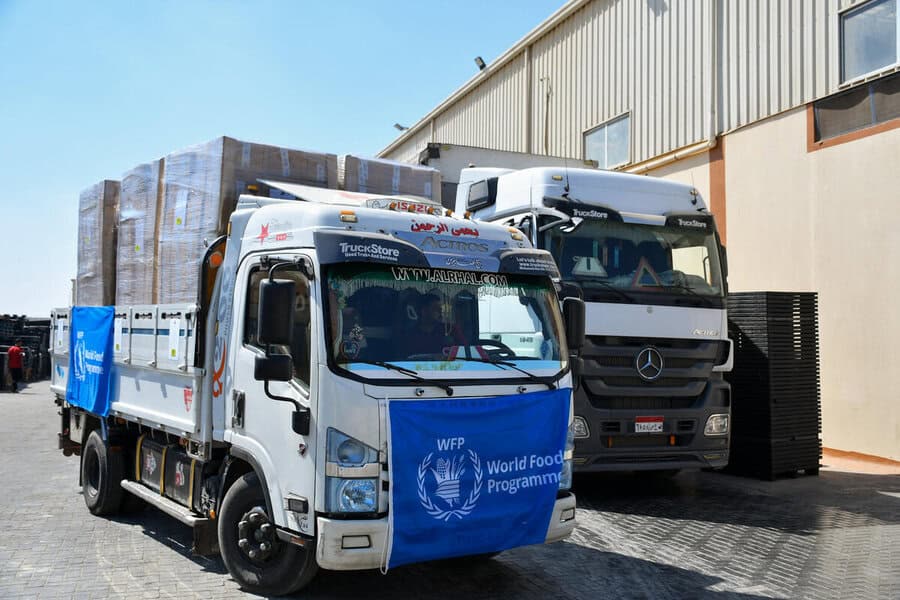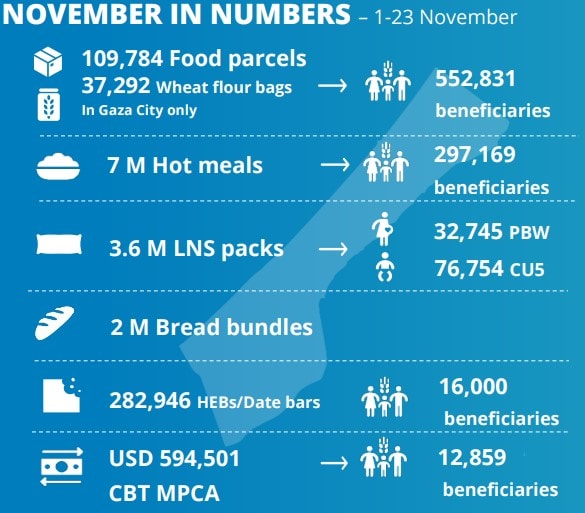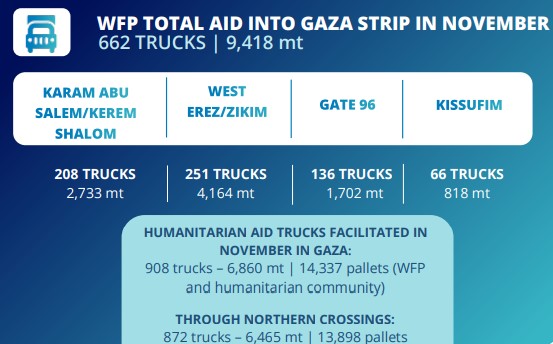
Perpetual Catastrophe: The WFP’s Latest Report on the Crisis in Gaza
December 21, 2024
A late-November report from the World Food program noted that the WFP and its affiliates struggle to do their work in Gaza because of Israel’s continuing disregard for humanitarian law. This leaves the people of Gaza reliant on a dwindling lifeline of very limited aid, which has been compromised in different ways: such as access restrictions (especially in Northern Gaza, which is completely inaccessible), the increase in looting, and attacks on humanitarian convoys in southern and central Gaza.
This report additionally mentioned their work in the West Bank, where Palestinians have also suffered a surge of violence on part of the Israeli Occupation. The WFP has supported 181,432 with cash-based transfers and 177,922 with food vouchers, enabling them to purchase food items at WFP-contracted shops. While 3,510 people, including displaced populations from Gaza, received multi-purpose cash assistance. Hence, relief has reached some Palestinians in need, yet the need remains high. Moreover, this is a testament to the damage done to the Palestinians’ economy and the halting of their ability to work or run their businesses due to the relentless Israeli military assaults.
In addition, numerous infrastructural and bureaucratic challenges continue to disrupt the supply of essential resources, such as fuel. In the meantime, businesses that rely on fuel, such as bakeries, are shutting down. There is not one bakery in North Gaza which remains open, while Gaza City merely has four operational bakeries. South and Middle Gaza bakeries run under extreme duress, struggling to keep up providing for large crowds due to daily supply shortages.

From WFP’s November Report, Page 1
Communal kitchens serving hot meals to starving families are similarly overwhelmed. During the first 28 days of November, WFP provided over 7 million hot meals to 297,169 people across the Strip; this is again, a drop in the bucket. Additional data is available in the graphic to the right.
During the same period, the enclave’s bakeries managed to produce over 2 million bread bundles; this number is nearly the exact population of Gaza, meaning it was enough bread for everyone for a day – or maybe two. Overall, there is not enough supplies entering Gaza to sustain the vast infrastructural, dietary and hygienic needs of the two million displaced residents.
The main problem faced by WFP, along with other organizations, has been with establishing a reliable supply chain. The teams struggle with obtaining “reliable access, a safe operating environment, steady resupply, removal of barriers, and improved infrastructure,” according to the report.
A relentless set of adversities continue to hinder the delivery of aid, beginning with the winter weather. Given the detrimental fuel shortage, all homes in the north have been burning waste to keep warm or to cook. While families in the south and the centre can still find firewood near the coast, its collection is highly risky.
The report found a “tripling of households experiencing poor or severe food consumption, and a doubling of those facing food shortages since July.” The statistics, as of early November, of cooked meals prepared by partners in 140 kitchens distributed daily to families across the Strip reached 440,000. This was 25% less than distributed meals in late September.
Although the WFP was able to deliver the first of its aid convoys through the new Kissufim crossing in mid-November, the consistency of access and safety for humanitarian convoys was still, the report noted, not guaranteed for future, direly needed deliveries. In the Gaza market, critical goods were growingly scarce, and the few commercial trucks that enter Gaza cannot resupply the market at the rate needed. Thus, some families go without these goods as the WFP’s local partners must “prioritize households that have gone over two months without assistance,”.
The WFP report also presented a list of crossings that comprise the main, Israeli-controlled routes into the Occupied Gaza Strip, but underlined that not all these were accessible. As of the late-November date of the report Gate 96 was operational, as was West Erez (Zikim). However, the latter allows WFP to deliver aid only to Gaza City. Kerem Shalom was operational, yet highly risky given the looting incident of November 16, and WFP was not able to deliver through it after that. Similarly, though the Kissufim route was operational, the WFP convoys were forced to proceed “slowly and cautiously due to repeated security incidents,”. Below is an infographic from the WFP report that shows the number of trucks that passed through these crossings, November 1-28.

From WFP’s November Report, Page 2
Lastly, the report described the severe hardship caused by lack of Internet connectivity. The telecommunication services are severely limited due to the fuel shortages. As a result, blackouts are frequent. Once again, delays in approvals and denials are strangling the process of a required clearance of items for Gaza. 58 satellite-based tracking devices (Track24) were delivered to Gaza by the WFP on November 20, yet more are needed.